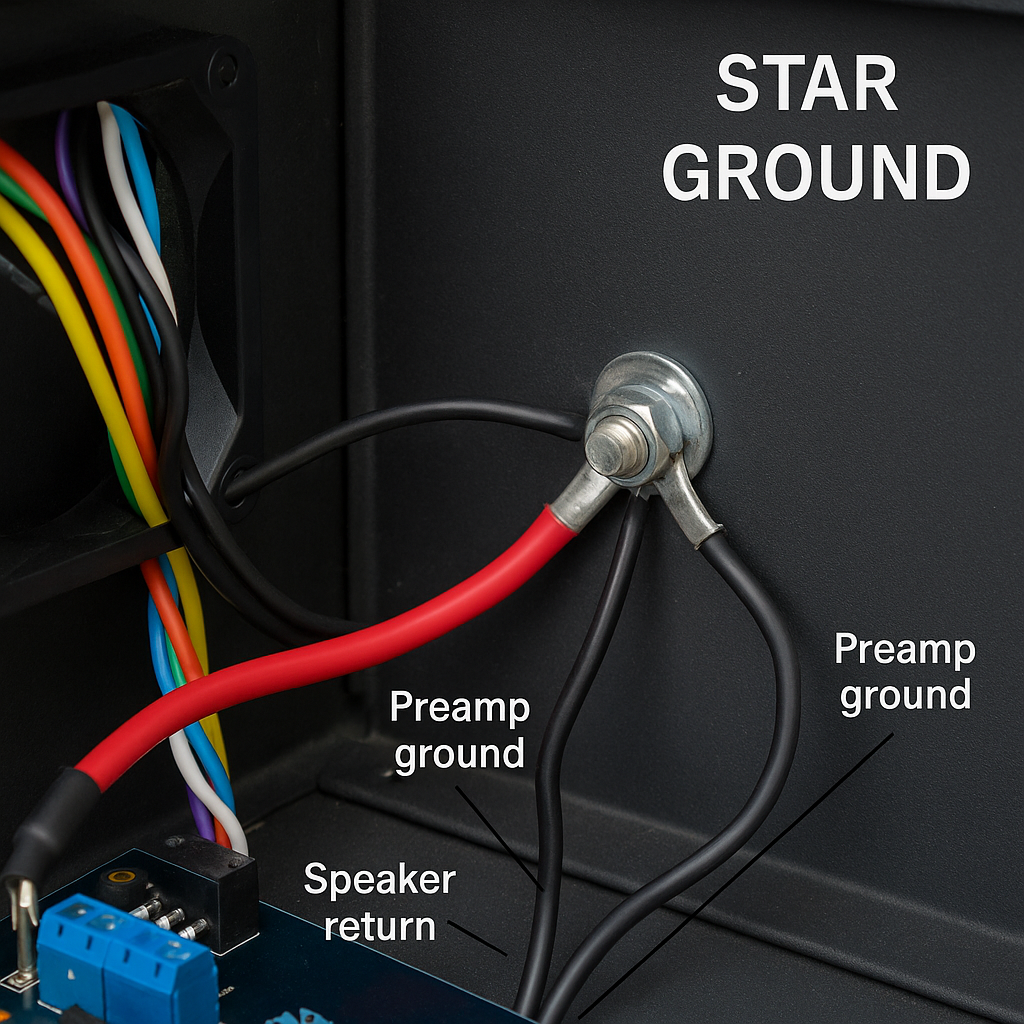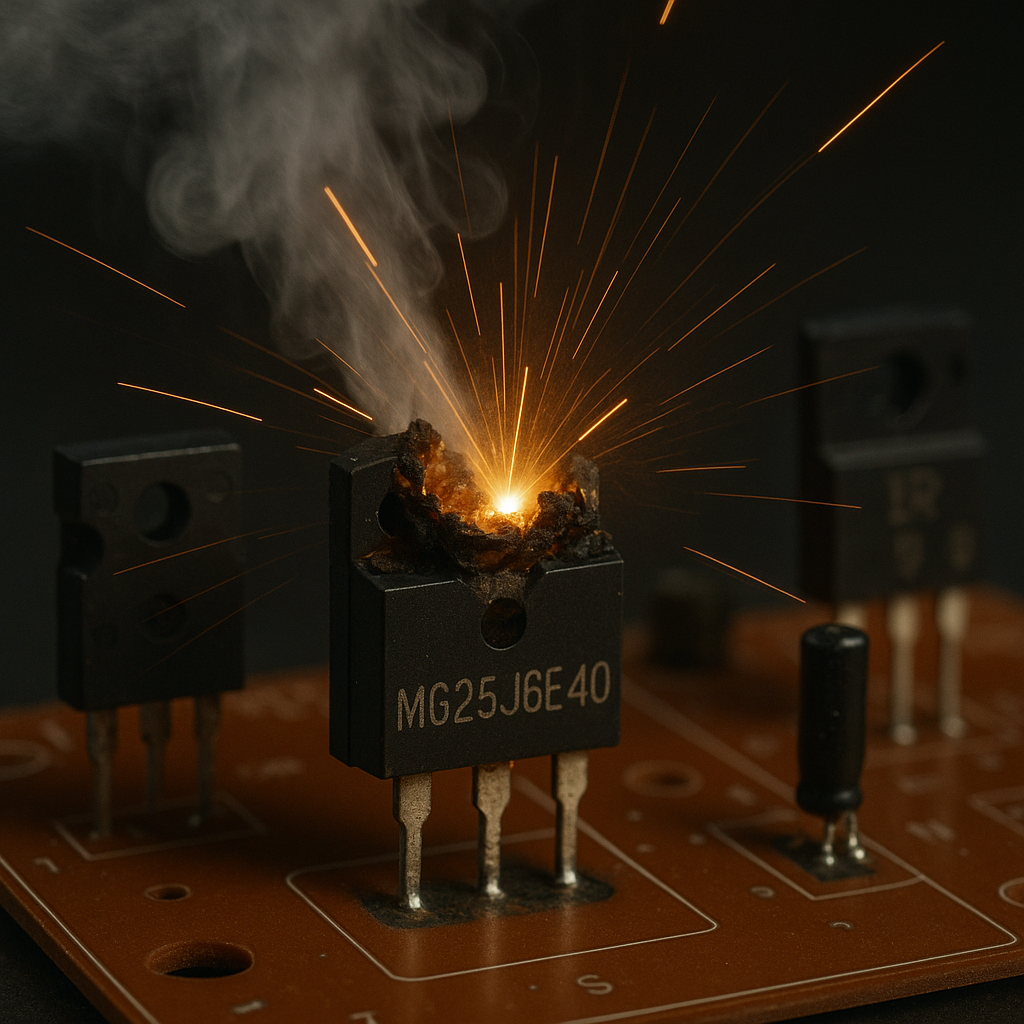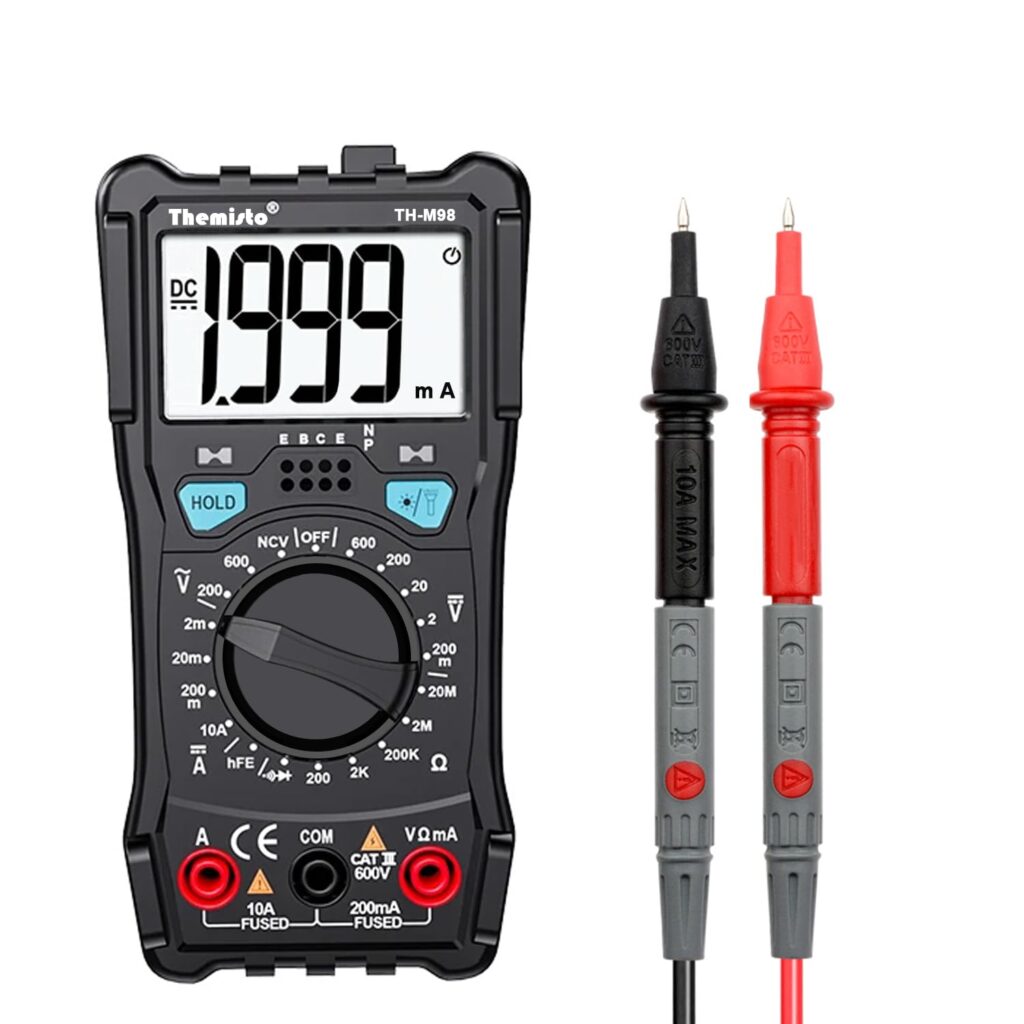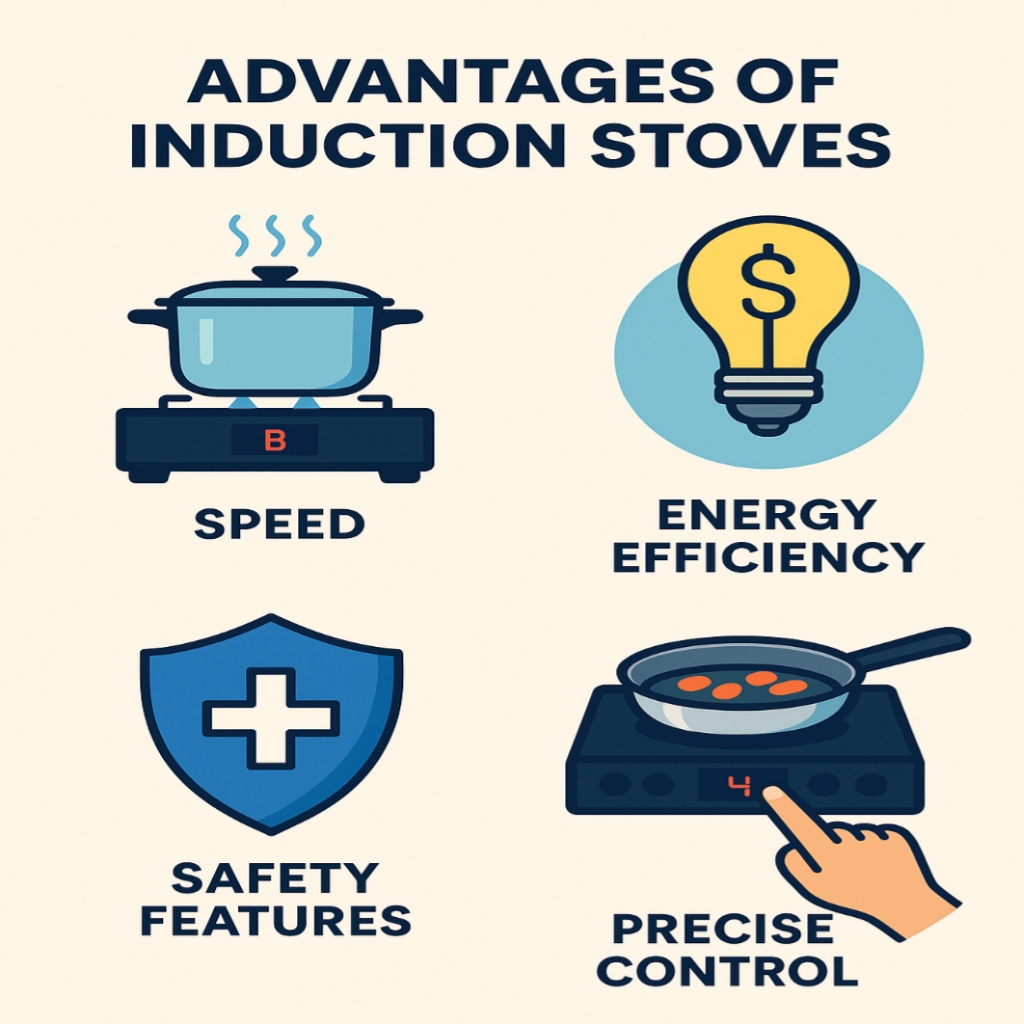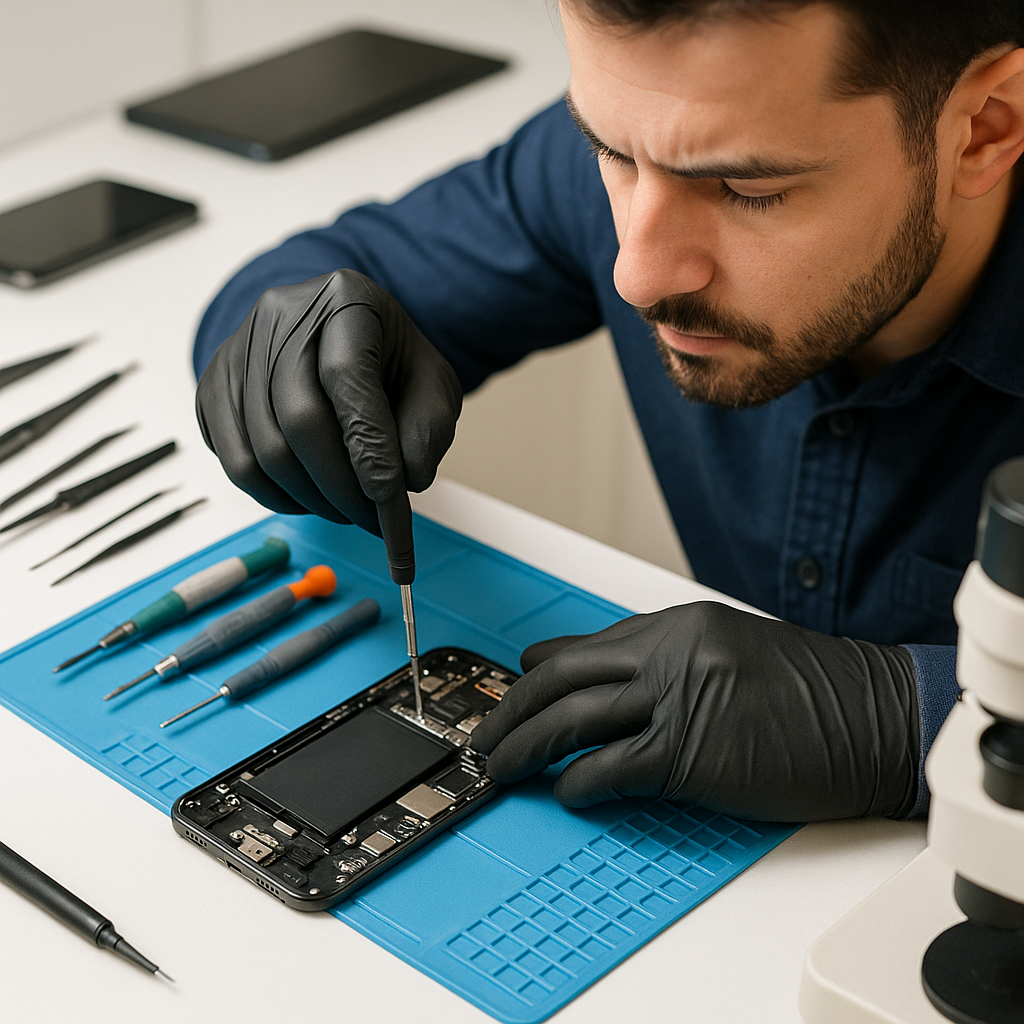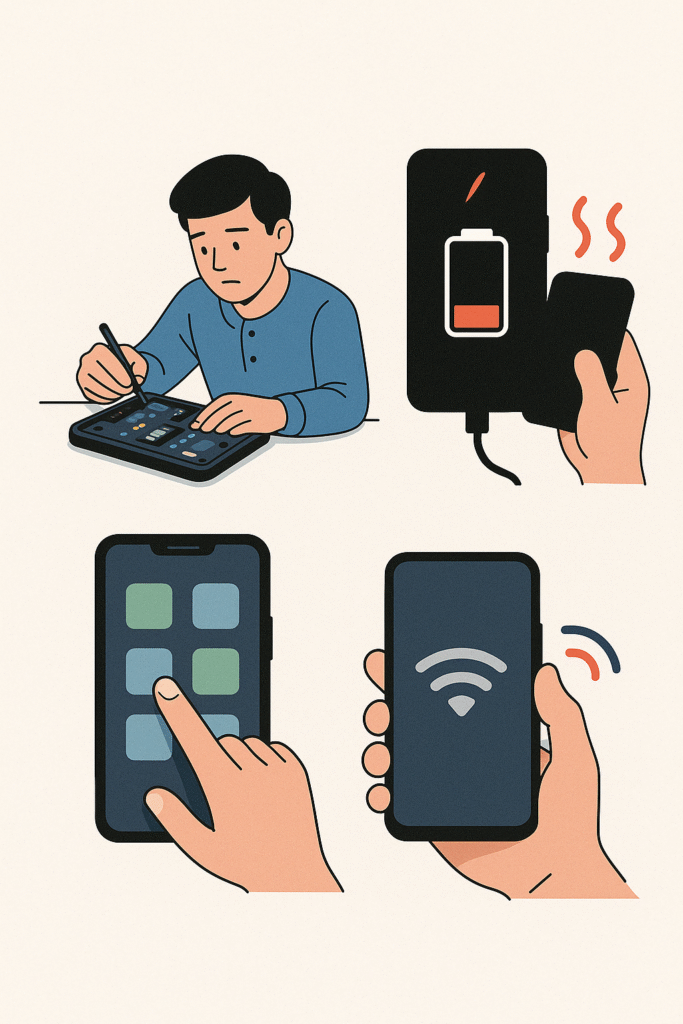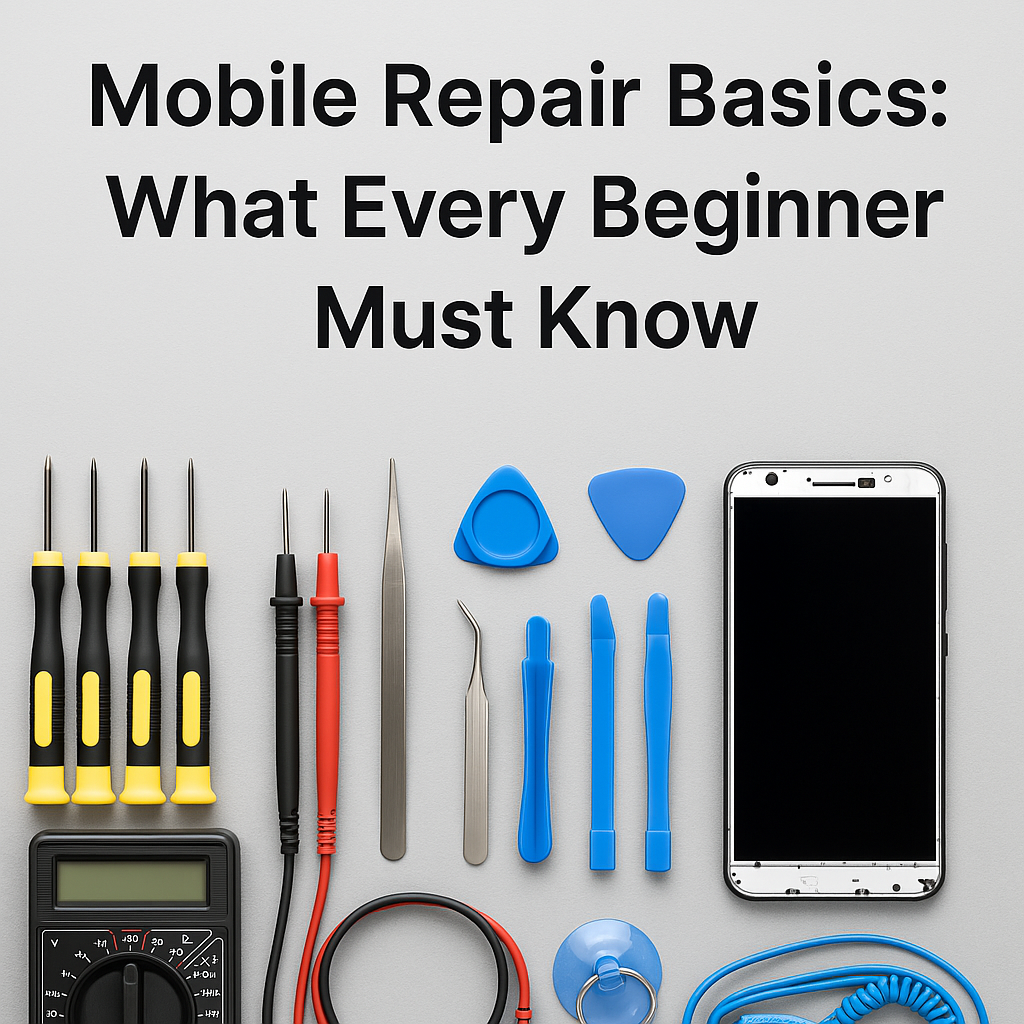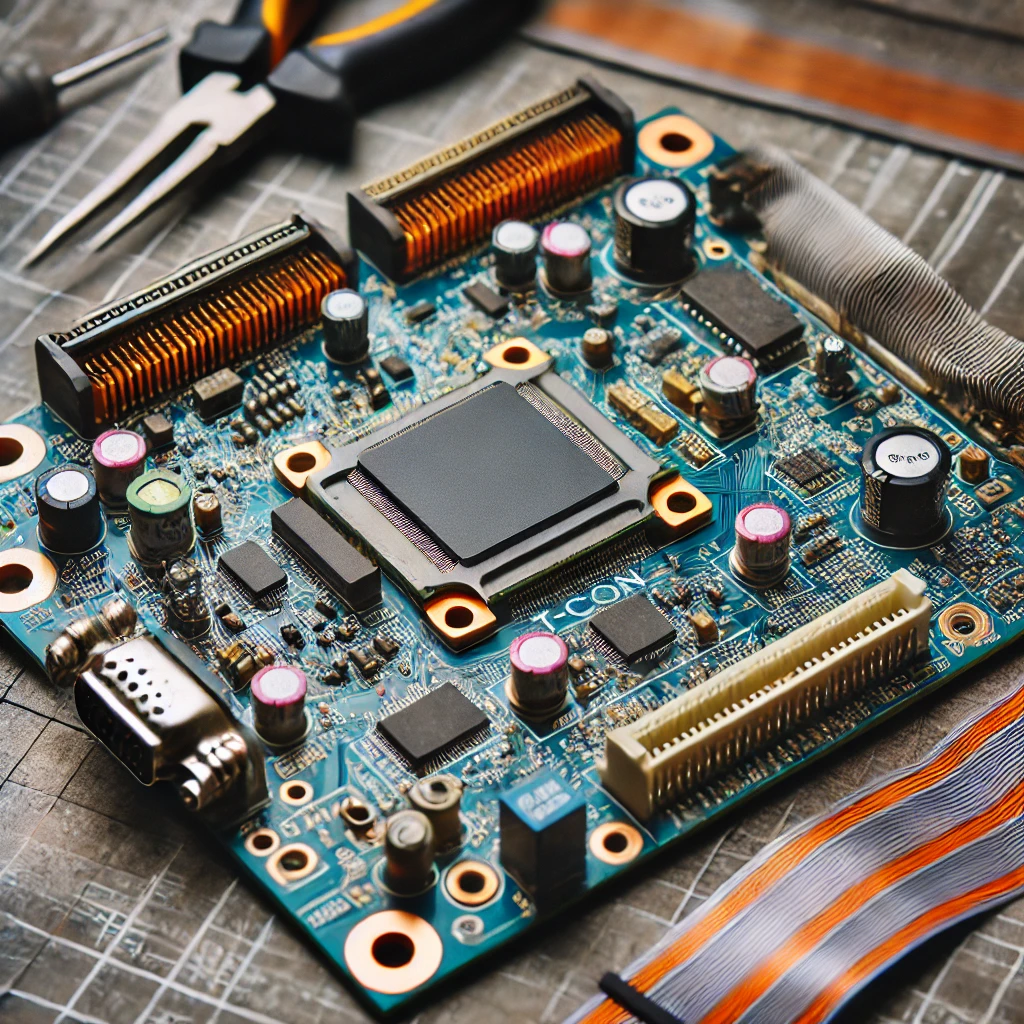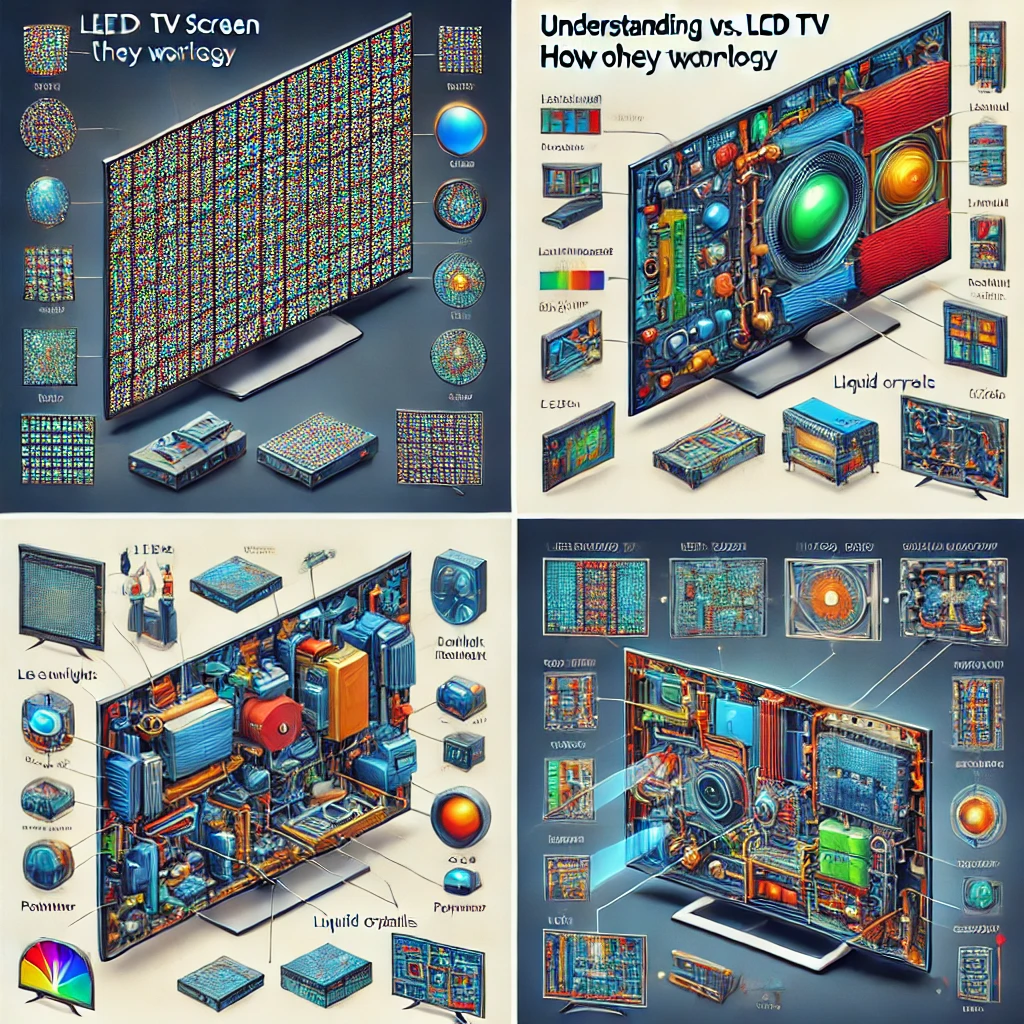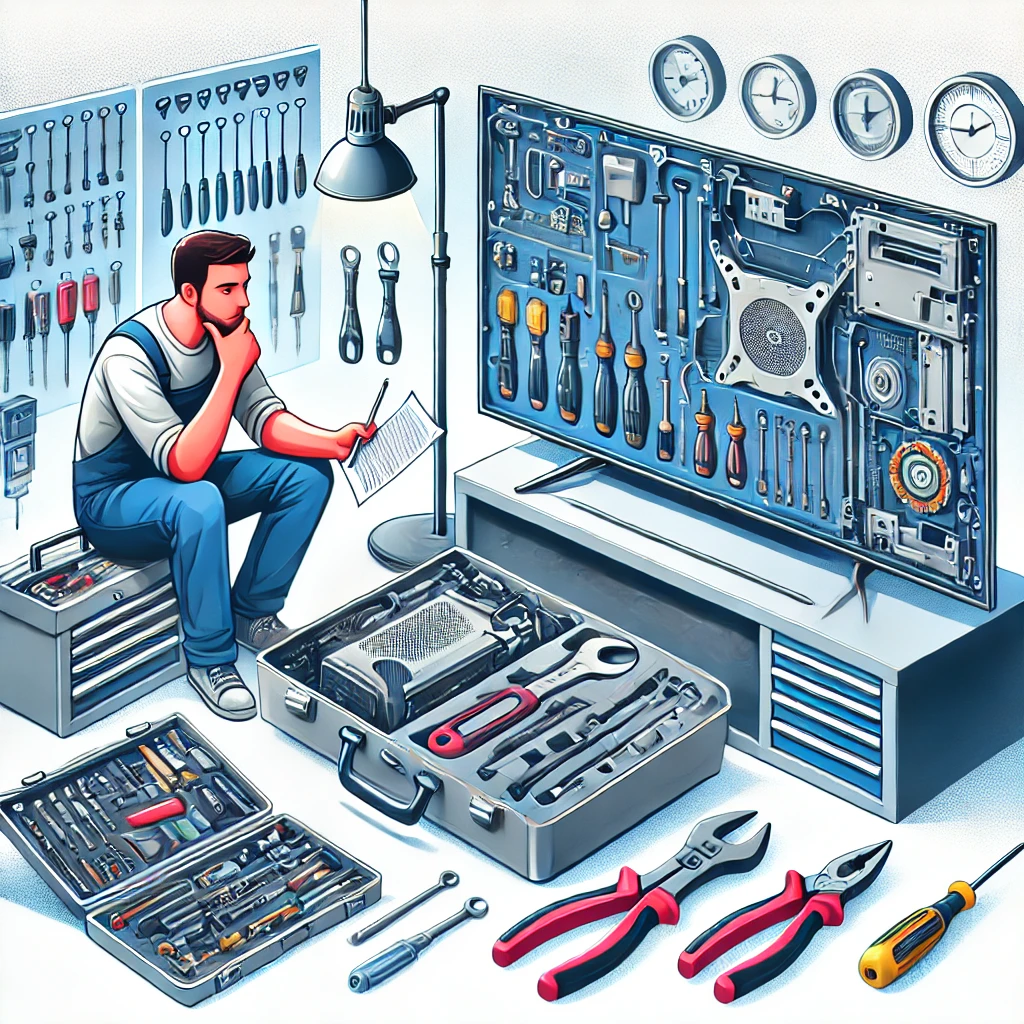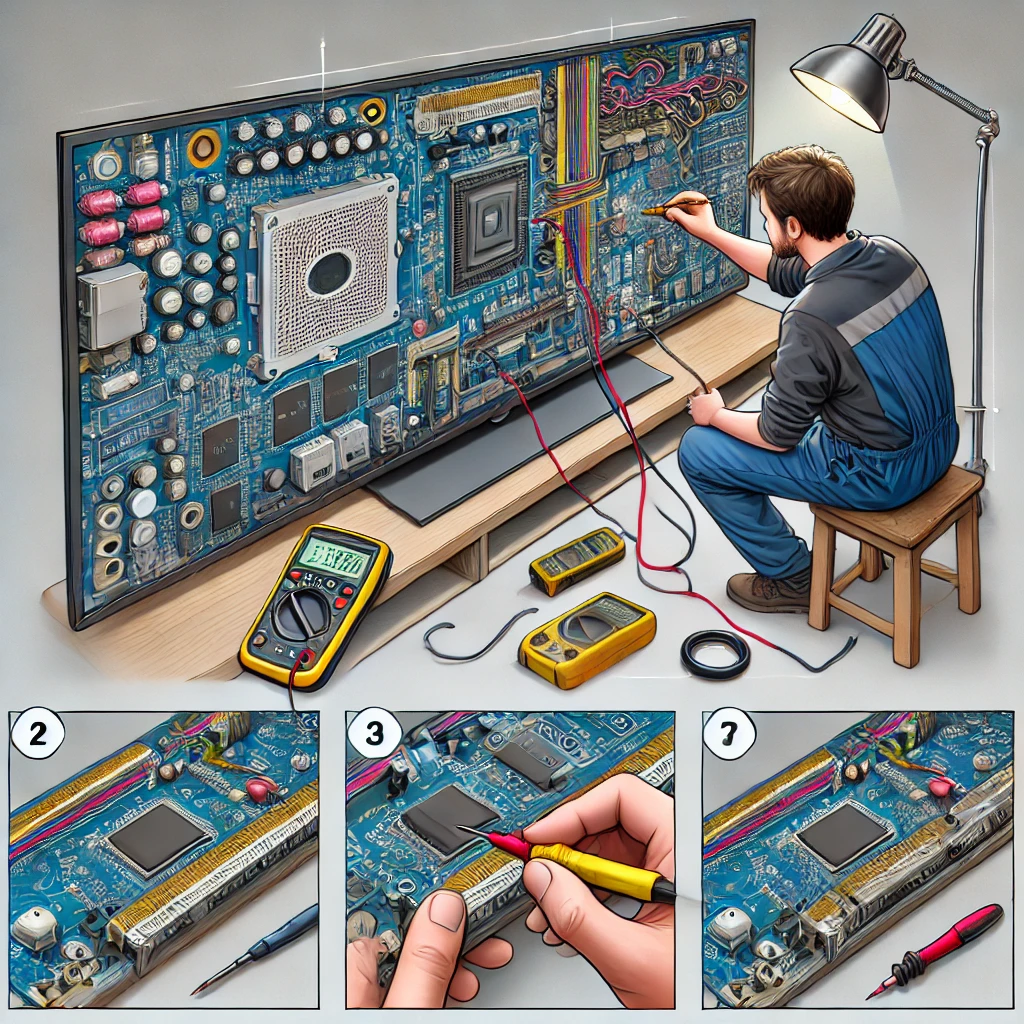Safety Precautions Every TV Repair Technician Must Follow
7 Essential LED TV & LCD TV Repair Technician Safety Tips for 2025.
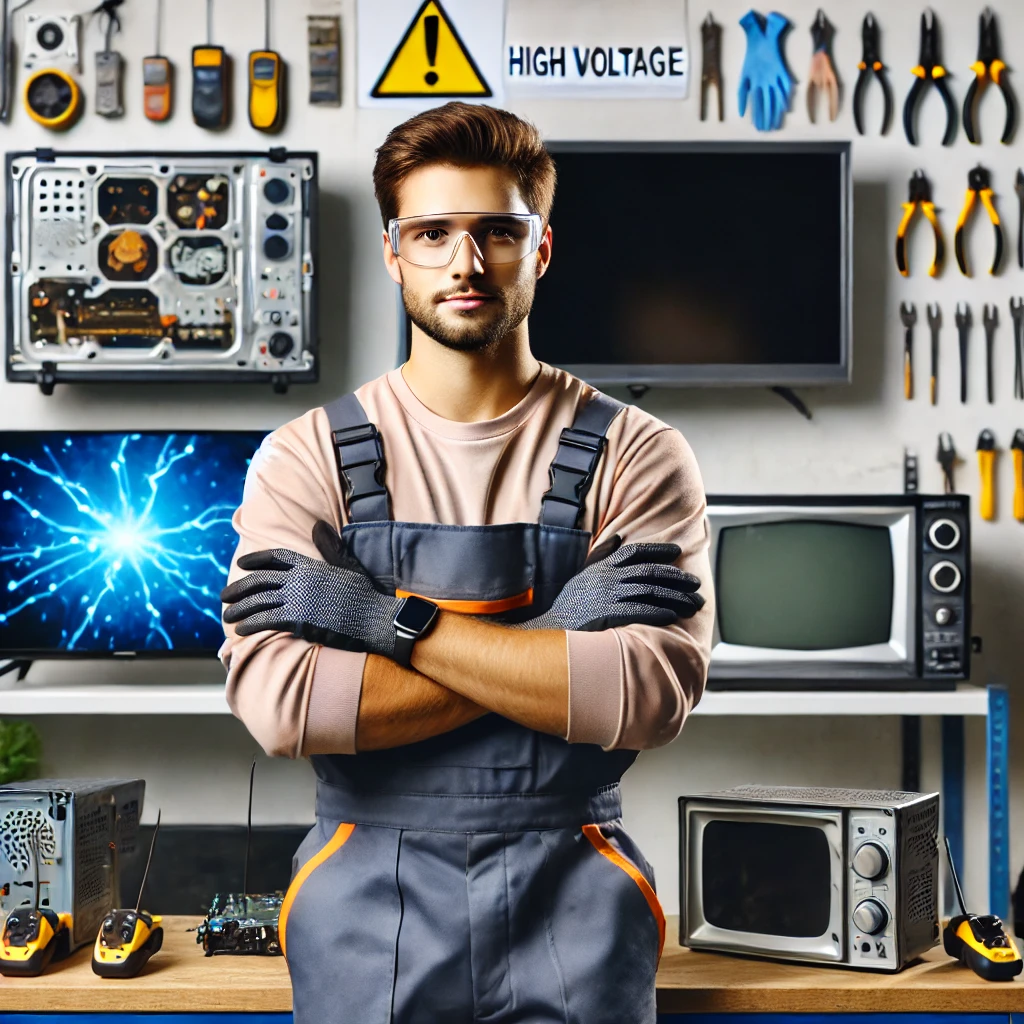
If you’re a TV repair technician or thinking about getting into the field, you’ve probably realized it’s more than just fixing screens or replacing circuit boards. Repairing TVs—whether old-school CRTs or the latest LED and LCD models—demands a solid understanding of electronics and, most importantly, a commitment to safety. Accidents can happen in a split second, and the consequences can be serious, ranging from electrical shocks to damaged equipment or even harm to the environment.
This post isn’t just a checklist of dos and don’ts; it’s a guide to help you stay safe while honing your skills. Whether you’re a seasoned technician or a curious beginner, following these TV repair technician safety tips can protect you and ensure your work is both effective and professional. Let’s dive into the essential TV repair technician safety tips every technician should know.
Why Safety Matters in TV Repair
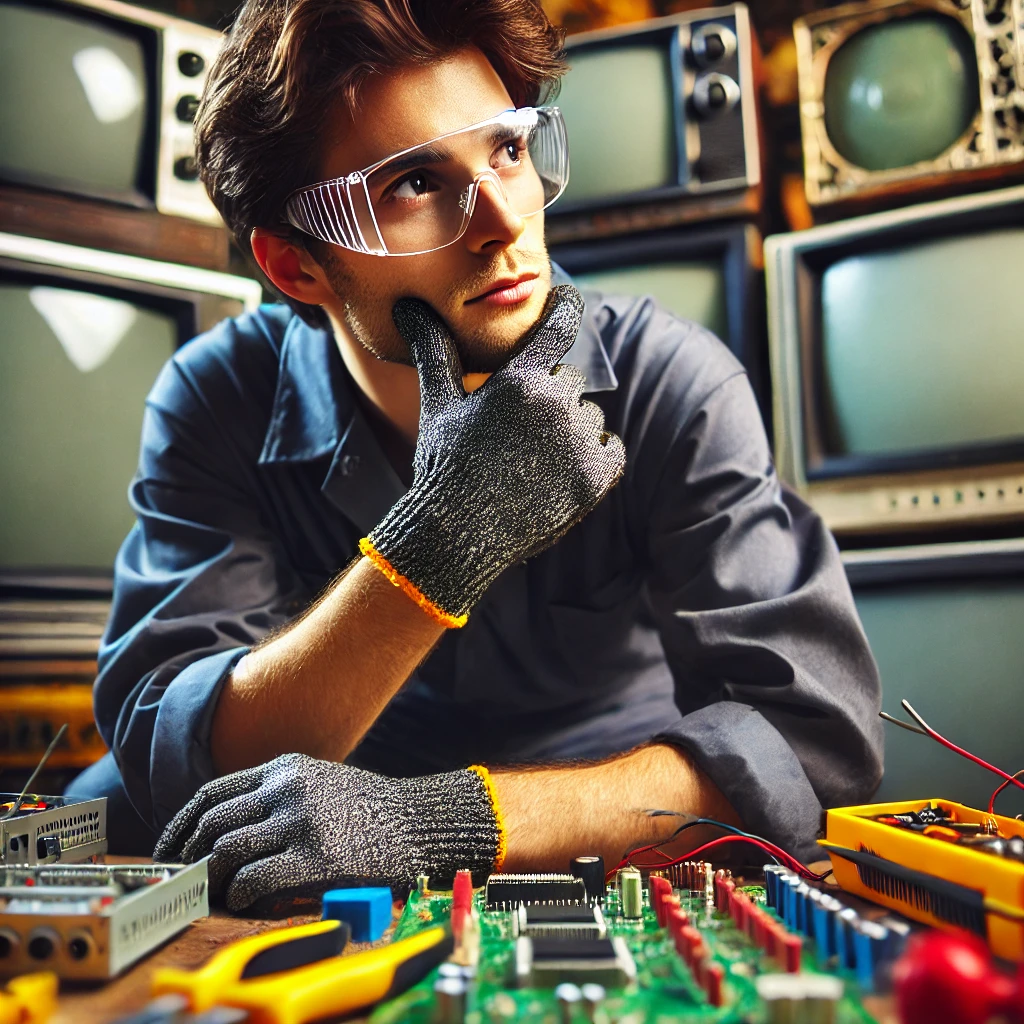
TV repair technician safety tips are essential because TV repair involves working with high voltages, sharp components, and delicate electronic parts. Neglecting safety can lead to electrical shocks, injuries, or damage to the TV set. Additionally, careless handling of electronic waste can harm the environment.
Beyond the obvious risks, safety also impacts your reputation as a professional technician. When clients see that you prioritize safe TV repair practices, they are more likely to trust your expertise. Following safety guidelines also minimizes costly mistakes, such as damaging expensive components or mishandling hazardous materials. Moreover, adhering to TV repair safety guidelines ensures compliance with legal standards and workplace safety regulations, reducing the chances of legal issues or penalties.
In short, taking safety seriously not only protects you but also strengthens your skills, builds your credibility, and safeguards your career as a TV repair technician.
1. Use Proper Personal Protective Equipment (PPE)
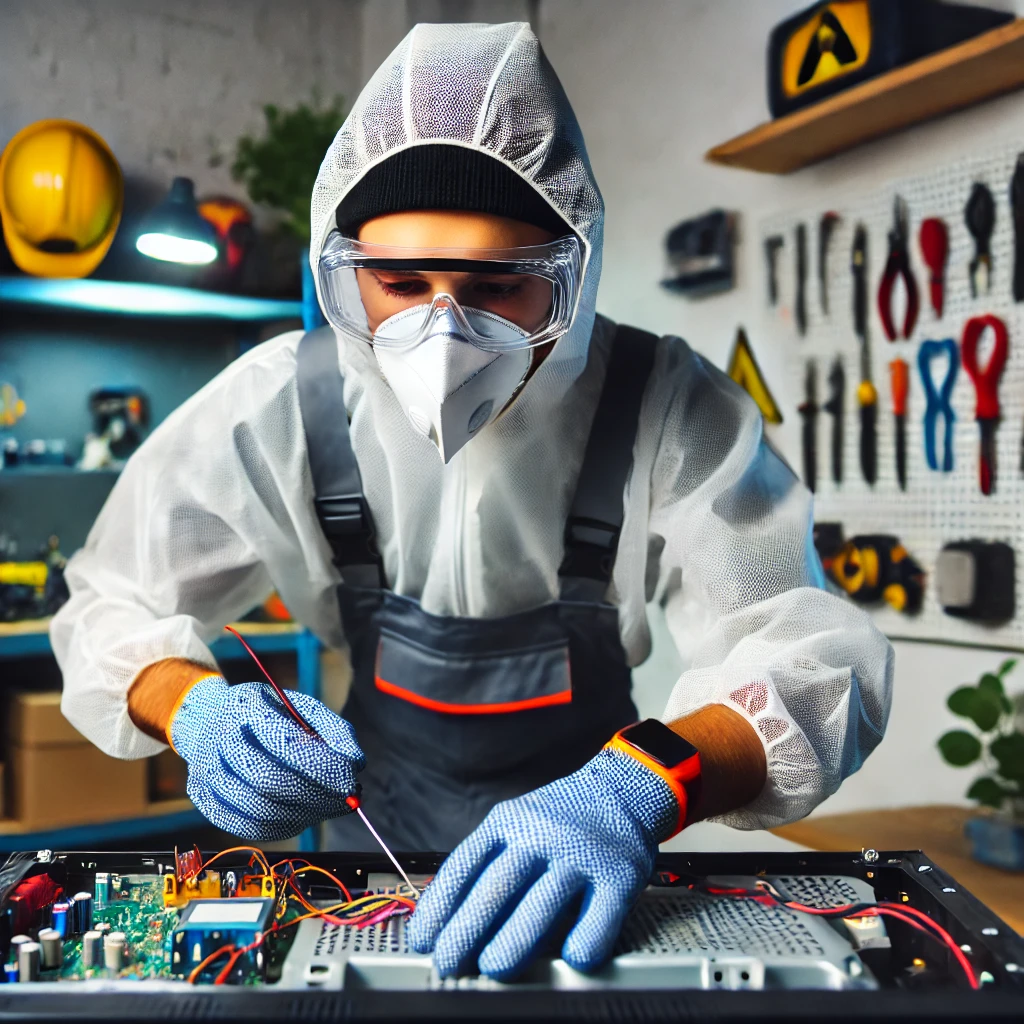
this is on first one steps in TV repair technician safety tips guideline’s.
- Safety Gloves: Use insulated gloves to protect against electrical shocks. Rubber or latex gloves can prevent direct contact with live circuits.
- Safety Goggles: Protect your eyes from accidental sparks, dust, or debris. Shattered screens or solder splatters can cause severe eye injuries.
- Anti-Static Wrist Strap: Prevent electrostatic discharge that can damage sensitive components. This is especially crucial when working with modern LED/LCD TV circuitry.
- Protective Clothing: Wear long-sleeved, non-conductive clothing to minimize contact with live components. Avoid loose clothing or jewelry that can get caught in equipment.
- Safety Footwear: Insulated, non-slip shoes help reduce the risk of electrical grounding and slipping accidents.
- Face Mask: If soldering or working with dust-prone components, use a face mask to avoid inhaling harmful particles TV repair technician safety tips
Properly using PPE not only protects you but also sets a professional standard when clients observe your dedication to safety.
2. Disconnect Power Sources
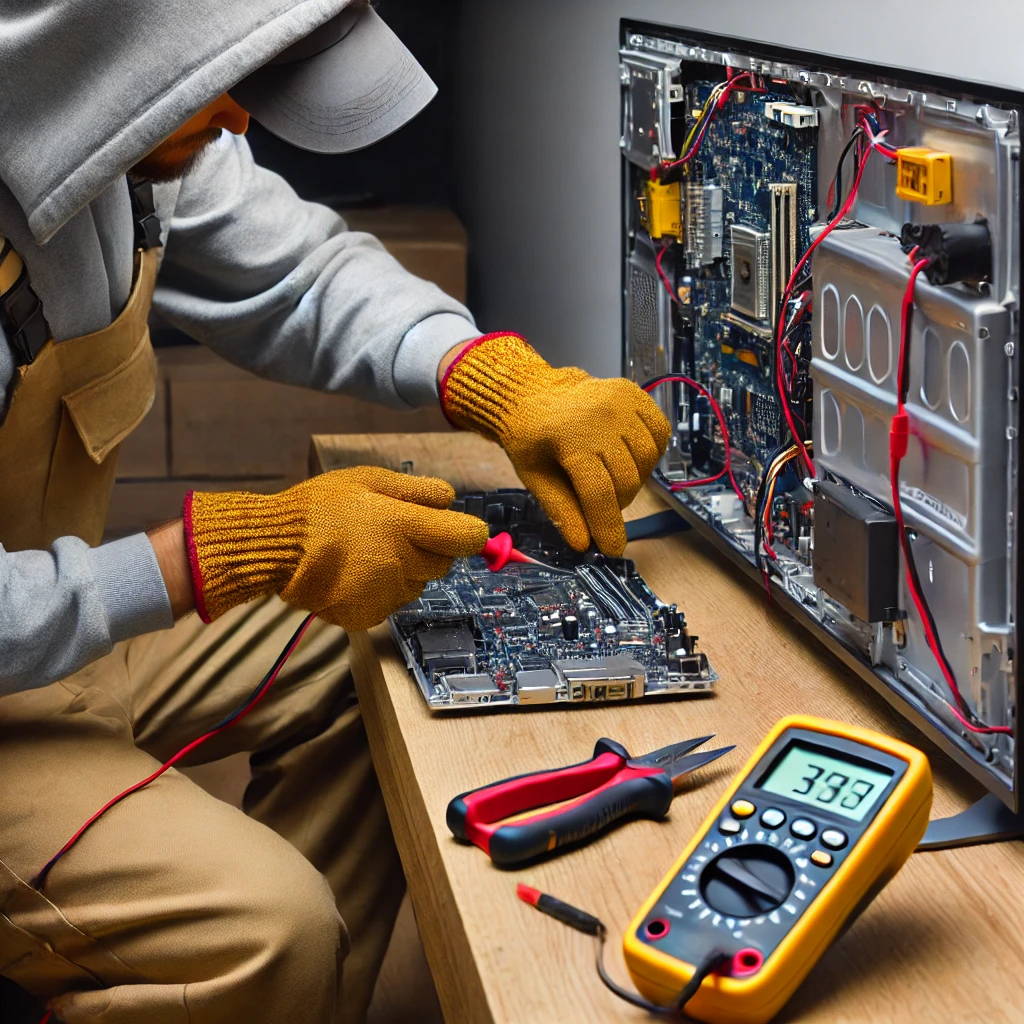
this is on second steps in TV repair technician safety tips guideline’s.
- Unplug the TV: Before starting any repair, always unplug the TV from the power socket. This simple step can prevent severe electric shocks.
- Check Power Switch: Double-check that the TV is completely powered off before opening it.
- Discharge Capacitors: For older CRT TVs, discharge high-voltage capacitors safely, as they can retain a dangerous charge even after being unplugged.
- Avoid Wet Conditions: Never attempt to repair a TV set in wet or damp conditions. Moisture combined with electricity is extremely hazardous.
- Test for Residual Power: Use a multimeter to check for any residual voltage before handling internal components.
- Use Insulated Tools: If working near power sources, use insulated tools to avoid accidental electrical contact.
Following these TV repair safety guidelines not only keeps you safe but also protects the TV from accidental damage during the repair process.
3. Work in a Safe Environment
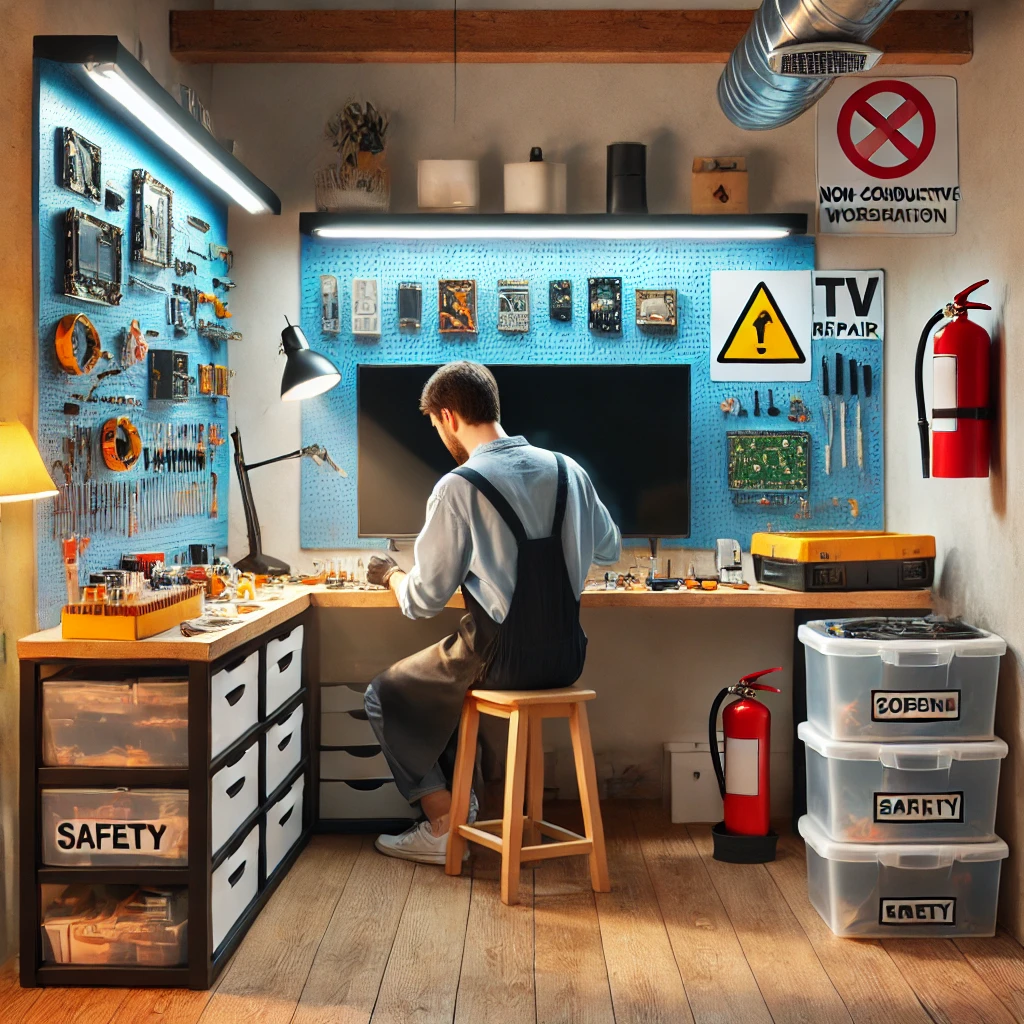
this is on 3 one steps in TV repair technician safety tips guideline’s.
- Adequate Lighting: Ensure there is enough lighting to clearly see internal components and avoid mistakes.
- Dry and Organized Workspace: Keep your work area dry, tidy, and free from unnecessary clutter. Spilled liquids or scattered tools can lead to accidents.
- Non-Conductive Work Surface: Avoid working on metal or conductive surfaces that can cause accidental short circuits.
- Proper Ventilation: If soldering or working with chemicals, make sure the room has proper ventilation to avoid inhaling harmful fumes.
- Ergonomic Setup: Use a stable workbench at a comfortable height to reduce strain on your back and neck.
- Secure Cables and Wires: Arrange power cords and testing wires neatly to prevent tripping or accidental disconnections.
- Emergency Preparedness: Have a fire extinguisher and a first aid kit nearby for emergencies. Know how to handle electric fires safely.
Creating a safe, organized work environment is just as important as following TV repair safety guidelines. It helps reduce mistakes, increases efficiency, and ensures your safety.
4. Handle Hazardous Components Carefully
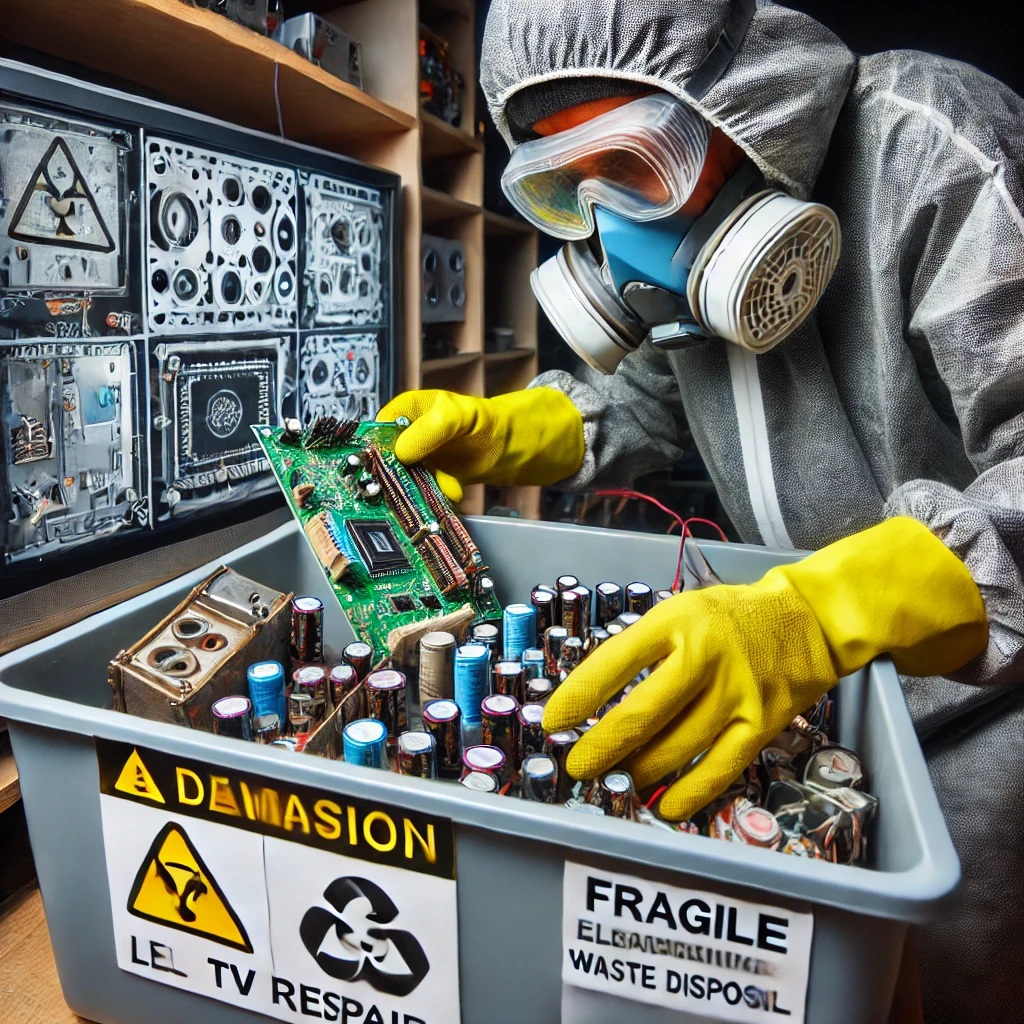
- CRT High-Voltage Capacitors: CRT TVs contain capacitors that can retain a dangerous charge even after being unplugged. Always discharge them safely before handling.
- Fragile LED/LCD Screens: Modern TV screens are delicate and can easily crack or shatter. Handle them with care, avoiding excess pressure or impacts.
- Toxic Materials: CRT tubes contain lead and other hazardous materials. If broken, they can release toxic dust. Always wear protective gear and clean up carefully.
- Electronic Waste Disposal: Dispose of hazardous materials like broken CRT tubes, damaged circuit boards, and old batteries according to local e-waste regulations. Never discard them with regular trash.
- Sharp Edges and Components: Internal TV components, like metal chassis and circuit boards, may have sharp edges. Handle them cautiously to avoid cuts.
- Mercury in Backlights: Some older LCD TVs use mercury-based backlights. If damaged, handle with care and follow safe disposal methods.
Handling hazardous components carefully protects your health, maintains environmental responsibility, and upholds professional standards in TV repair.
5. Use the Right Tools
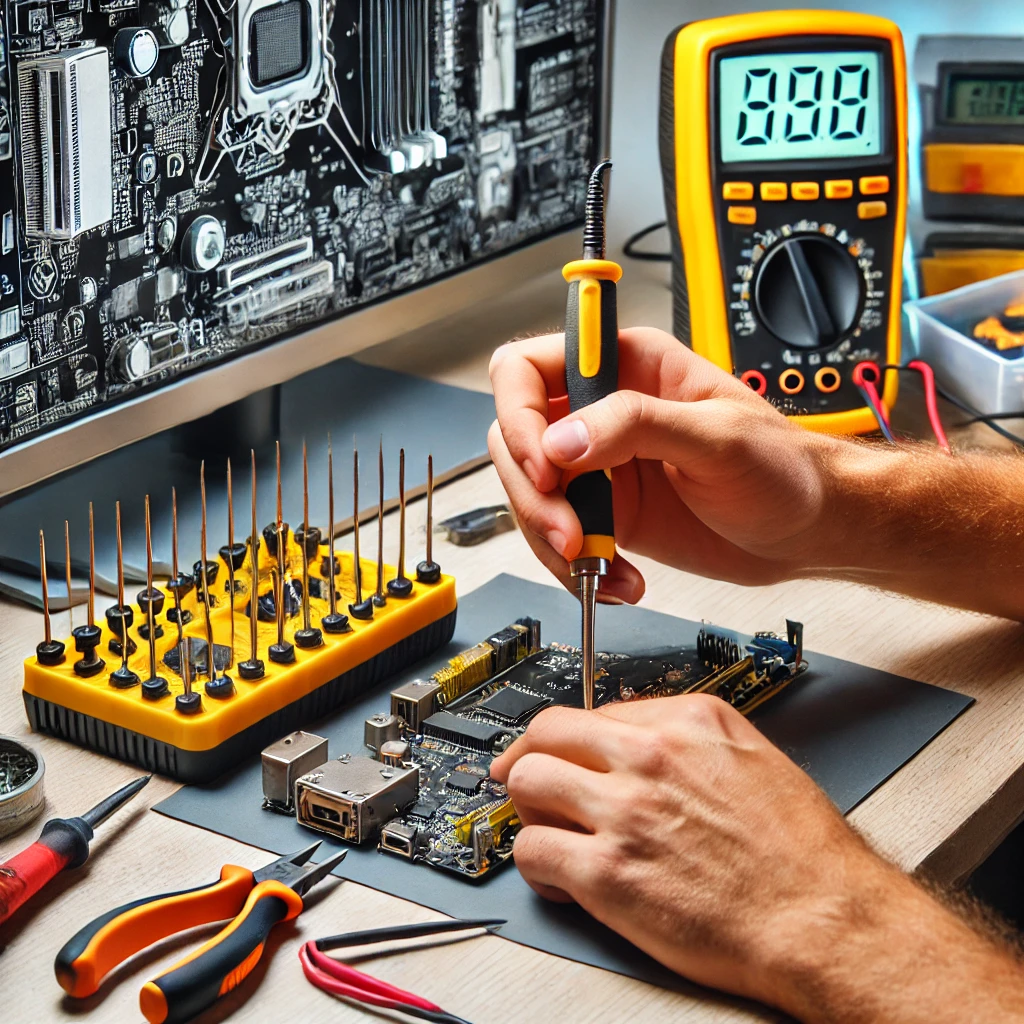
- Insulated Tools: Use insulated screwdrivers, pliers, and multimeters specifically designed for electronics. They help prevent electric shocks and accidental short circuits.
- ESD-Safe Tools: Use antistatic brushes, wrist straps, and mats to protect sensitive TV components from electrostatic discharge.
- Quality Soldering Equipment: Ensure your soldering iron has temperature control and is grounded properly to avoid component damage.
- Voltage Testers: Before touching any wires or components, use a reliable voltage tester to check for live circuits.
- Suction Tools and Tweezers: Use suction cups and fine-point tweezers to handle delicate screen parts and small components without causing damage.
- Cable Management Tools: Keep zip ties, cable organizers, and clamps to maintain a neat and hazard-free workspace.
- Proper Cleaning Supplies: Use isopropyl alcohol and non-static brushes to clean circuit boards without causing damage.
- Appropriate Screwdrivers: Have a variety of screwdrivers with magnetic tips to avoid dropping screws into the TV set.
Using the right tools not only improves your efficiency but also reduces the risk of accidents, making you a more reliable and effective TV repair technician.
6. Stay Updated and Educated
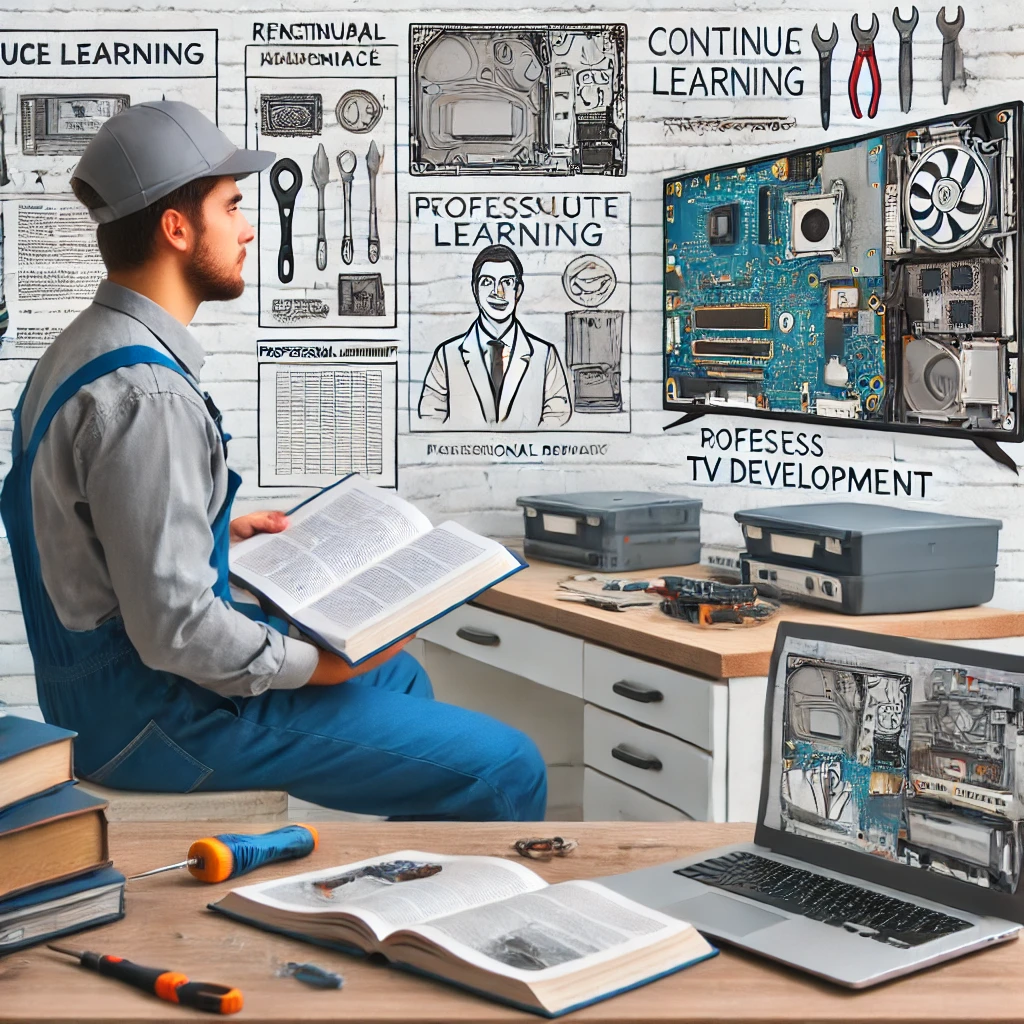
- Continuous Learning: Regularly update your knowledge about new TV models, repair techniques, and technological advancements.
- Attend Workshops: Participate in workshops, training programs, or certification courses to stay updated with industry standards and advanced safe TV repair practices.
- Online Resources: Follow reputable online forums, blogs, and video tutorials that focus on TV repair and electronics troubleshooting.
- Manufacturer Manuals: Review manufacturer manuals for specific repair guidelines and safety instructions.
- Network with Other Technicians: Connect with other TV repair professionals to share knowledge, exchange tips, and discuss industry challenges.
- Stay Informed About Regulations: Be aware of local regulations and safety standards related to electronics repair, hazardous material handling, and e-waste disposal.
- Read Trade Magazines: Subscribe to trade magazines or electronics journals that discuss the latest trends and safety protocols in the repair industry.
Continuously improving your knowledge and skills ensures you remain a competent and reliable TV repair technician, capable of handling even the most complex issues safely.
7. Avoid Working Alone
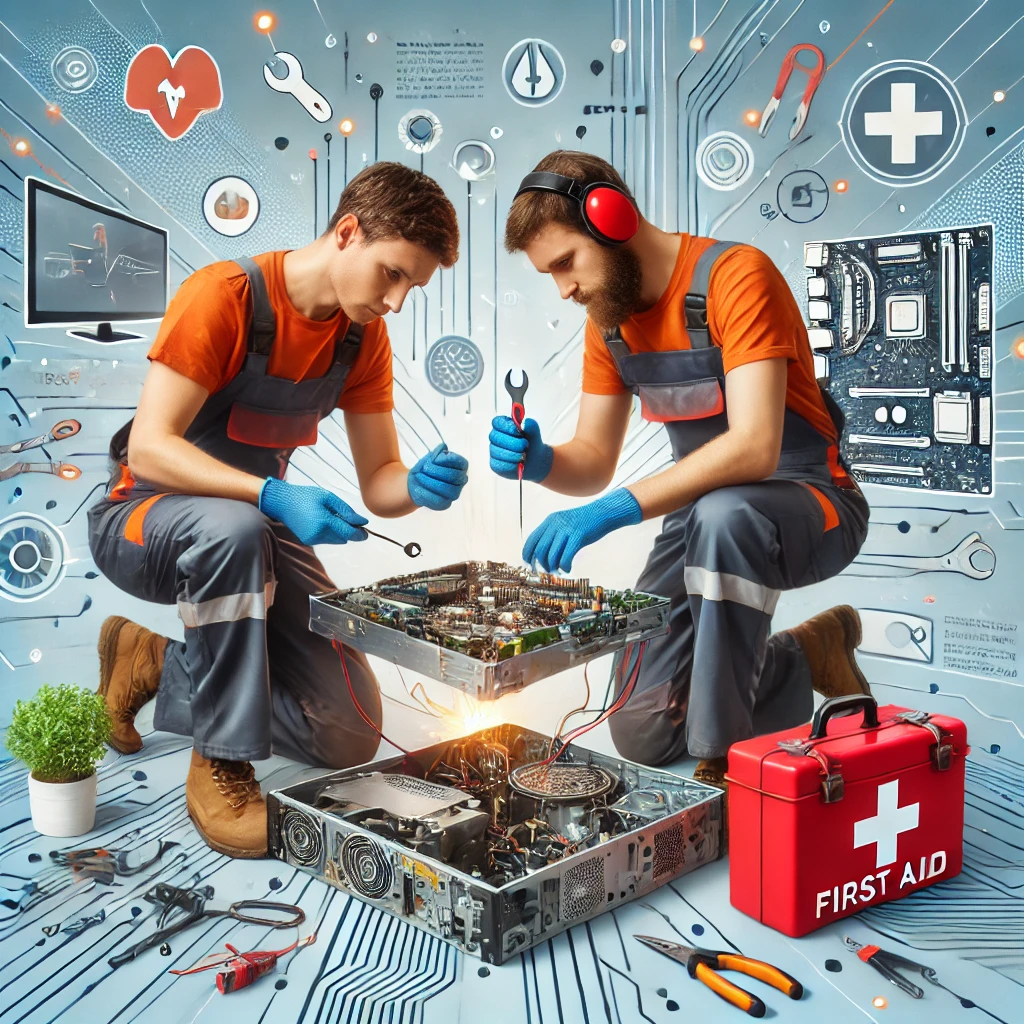
- Have a Safety Partner: Whenever possible, work with a colleague who understands the basics of TV repair safety guidelines. They can assist during emergencies or if you encounter a challenging issue.
- Emergency Response: If you accidentally receive a shock or an injury occurs, having someone nearby can quickly call for help or provide first aid.
- Second Set of Eyes: Another person can help double-check connections, power sources, and ensure that all safety measures are followed, reducing mistakes.
- Shared Knowledge: Collaborating with others can provide insight into complex issues and enhance your troubleshooting skills.
- Remote Communication: If working alone is unavoidable, keep your phone close and inform someone about your work schedule. Arrange check-ins to ensure your safety.
- Handling Heavy Components: Some TVs can be bulky or heavy. Having someone to help lift and move them can prevent physical strain or accidental drops.
Avoiding solitary work not only enhances personal safety but also improves the quality of your TV repair technician safety practices.
Conclusion
Following these TV repair technician safety tips can be the difference between a successful, incident-free repair and a dangerous accident. Prioritizing safety not only protects you from physical harm but also preserves your reputation as a skilled, responsible TV repair technician. Always remember that consistent use of TV repair technician safety tips makes you a more effective and reliable professional.
By adopting a safety-first approach, you reduce the chances of mistakes, increase client satisfaction, and build trust in your abilities. Implementing these TV repair technician safety tips demonstrates professionalism, commitment, and a deep understanding of the complexities involved in TV repair.
If you’re eager to expand your expertise, continue learning about TV repair technician safety tips and explore more informative content on Tamil Technicians. Stay safe, stay skilled, and keep growing in your field!
External link :
- LED TV Speaker 8 Ohm and 10W Speaker and woofer or LCD TV with bass Full-Range loudspeakers Sound System (Metal)
- Gold-17E 26-55inch led TV Constant Current Board, Universal LCD Inverter, Led Tv Backlight Driver, Input Voltage-10-26v, Output Voltage-65-165v
- 4K@60Hz HDMI to HDMI Cable, 3M Length with Support eARC and Compatible with Smart HDTV, Laptop, Monitor, Projector, eARC enable Soundbar(Black)
Internal link :
- check here all tips in below

